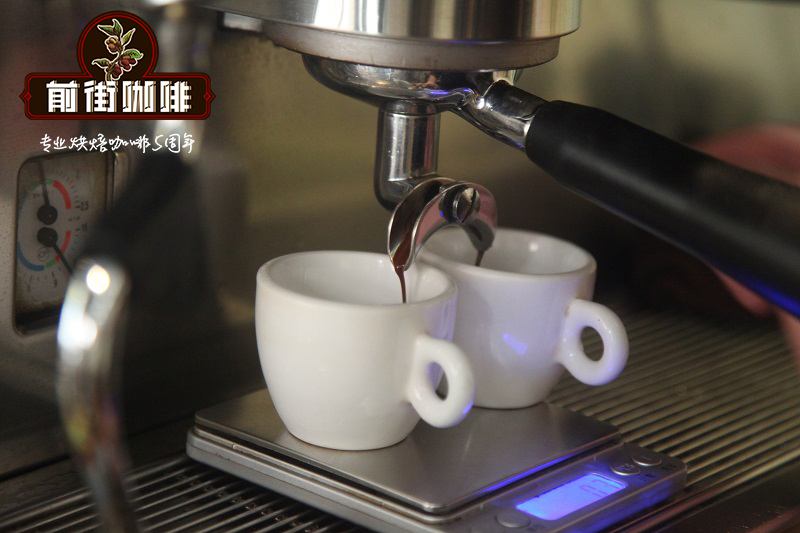Santa Monica Manor, Costa Rica, hand-made suggestion. Is Santa Monica Black Pearl Coffee good?

Professional coffee knowledge exchange more coffee bean information please follow the coffee workshop (Wechat official account cafe_style)
Washed Costa Rican Coffee-Tara Pearl Coffee beans Santa Monica Black Pearl
[manor] Santa Monica Manor Santa Monica
Washing Full-Washed
[baking degree] moderate baking Medium Roast
[bean seed] Kaddura and Kadu love Caturra and Catuai
[place of origin] Costa Rica COSTA RICA
[producing area] Tarazhu Tarrazu
[altitude] 1450-1650m
[grade] European extremely hard beans SHB-EP / 17-18 Mesh
[net content] 227g (half pound)
Kaduai is a hybrid of Kaddura and Mundo Novo Mondovor. The common feature of the two varieties is strong acidity and complex taste. The difference is that Kadu Ai can harvest abundant and less diseases and insect pests year after year, and its planting cost is low but its life span is only 10 years.
[dried] ripe fruit, fried nuts, vanilla, cardamom spices, honey
Tea, jasmine tea, cream, nuts, caramel
[sips] the acidity is mild, the entrance is very smooth, like creamy nut chocolate, balanced and not boring. The middle part of the spice is dense, and the mouth is becoming as sticky as cream. The end rhyme is sweet and bitter chocolate, after a little cold, mint's cool feeling is highlighted, so that the whole bean is sticky but not greasy, medium-deep baking also has a clear taste, and there is orange caramel precipitation at the bottom of the cup.
The general taste of Costa Rica is usually thin and sour. Recently, Costa Rica has become more and more sticky and tastes more delicate and layered. Its gentleness is not without features, but the complexity and depth it is about to show need to be carefully savoured when the coffee is slightly cold-savoring the aroma of stone almonds slipping into the mouth from the rim of the cup and the creamy mellowness that followed, with delicate acidity and sweetness. And as long as it is not a famous manor honey treatment, the character ratio is usually very high. Like this one, it really gives the rose a big surprise.
[Santa Monica Manor Santa Monica]
Santa Monica Manor this bean is produced by the "European rules" coffee beans, is the Tarazu production area of high-quality washed beans. Volcanic soil, the careful care of farmers, high-mature berries, clean water, a century-old washing process that is proud of, and the "European rules" treatment process to completely remove defective beans by hand, ensure that the flavor of each cup of coffee will reveal its introverted demeanor in unexpected purity.
Costa Rica is located in the Central American isthmus, and is simultaneously regulated by Pacific and Atlantic currents and sea breezes. There are many towering volcanoes up to 2000 meters above sea level in Costa Rica. Coffee berries grow slowly in the fertile volcanic ash soil and cool environment at high altitude, giving birth to coffee beans with complete and rich flavor. Costa Rica has long grown coffee on the slopes of the Poas and Barva volcanoes, today known as the Central Valley (Central Valley). After years of development, there are now seven major coffee-growing areas.
Grade。 Name / altitude
1. Tarrazu Tarazhu / 1300-2000m
2. Tres Rios Sanshuihe / 1400-1800m
3. West Valley West Valley / 1200-1650m
4. Central Valley Central Valley / 1200-1600m
5. Orosi Orosi / 900-1200m
6. Brunca Blanca / 800-1200m
7. Turrialba Chuliabad / 600-900m
[grade]
The grading of Costa Rican coffee beans is quite simple, but it is very useful for consumers-it is graded according to the altitude of the coffee garden, a total of seven grades:
Grade。 Name / acronym / elevation (ruler)
1. Very hard beans / SHB / 4500 Mustang-
two。 Hard beans / HB / 4000-4500
3. Semi-hard beans / SH / 3500-4000
4. High-grade water washed beans / EPW / 3000-3500
5. Washed beans with good water / PW / 2500-3000
6. Super good washed beans / EGW / 2000-2500
7. Good washed beans / GW/-2000
[Costa Rica Costa Rica]
Costa Rica is bordered by the Pacific Ocean to the west and the Caribbean Sea to the east. Costa Rica means "rich coast" in Spanish. Coffee is an important economic source of Costa Rica. The early coffee saplings were brought by a Spaniard Navarro > from Cuba in 1779, and later another Spanish missionary, Carazo, was also introduced from Jamaica, so it has been cultivated for more than 200 years.
The employment of 1x3 in Colombia is related to coffee. Colombians say that coffee has changed the country and enjoyed a rich environment, and coffee has indeed made an outstanding contribution. Colombia ranks third from the bottom of Central America in area, but its economic environment is better than that of most countries.
Costa Rica can be divided into two seasons each year, with the dry season from December to April, when coffee is harvested, and the wet (rainy) season from May to November. In recent years, micro-processing plants have been set up one after another, and since the water consumption is only 5% of that of traditional washing plants, and does not require huge sinks and exposure fields, the investment required is relatively small. The "honey-treated coffee" with low acidity, high complexity and strong sweetness has become the target of competition in the coffee industry in recent years, and the outstanding ones have greatly enhanced the international popularity of the estates.
Costa Rica is located between Panama and Guatemala, the high-altitude volcanic terrain and abundant rainfall are suitable for the growth of coffee trees, the main reason for the production of high-quality coffee, and the support of the local government for the coffee industry. it is also the driving force to maintain a high level of coffee quality in the country!
Analysis of Costa Rican coffee brewing
Recommended cooking method: hand flushing
Degree of grinding: 3.5 (Japanese little Fuji R440)
V60 filter cup, 15g powder, water temperature 90 degrees, grinding degree 3.5, ratio of water to powder 1:15
Stew with 40 grams of water for 30 seconds
Section: water injection to 107 g cut off water, slow water injection to 227 g.
That is, 40-107-227
The total time is 2 minutes and 02 seconds.
BG grind 4QM 90 degrees water temperature.
Bean grinder
Grinding degree
Powder quantity
Filter cup
BG
4Q
15g
V60
Water temperature
Stuffy steam
The second stage of water quantity
The third stage of water quantity
Total time 2:02
90 degrees
40g water for 30s
67g
120g
Total water volume: 227g
Sweetness: ☆☆☆
Acidity: ☆☆
Bitterness: ☆
Other suggestions for trickling extraction:
French kettle: recommend 3.5murmur4 grind degree, water temperature 91 degrees.
END
Important Notice :
前街咖啡 FrontStreet Coffee has moved to new addredd:
FrontStreet Coffee Address: 315,Donghua East Road,GuangZhou
Tel:020 38364473
- Prev

Characteristics of a New Colombian Coffee Variety Eugenioides Okinoides
Professional coffee knowledge exchange more coffee bean information please follow the coffee workshop (Wechat official account cafe_style) Merizalde coffee beans have recently attracted the attention of some people, he and his best friends and long-term partners: Julian, Andres, Santiago Holguin have been in the Cali estate of Columbia Autonomous City Finca Inmaculada, Finca Monserra
- Next

Yejia Coffee Farmers Union YCFCU Hofsa Cooperative Hafursa Coop washed native varieties
Professional coffee knowledge exchange more coffee bean information please follow the coffee workshop (Wechat official account cafe_style) Yega Chet Coffee Farmers Union YCFCU Hoffee Cooperative Hafursa Coop washing native varieties mixed flavor? Hofsha, originally a village name in the town of Ethiopia, is the smallest unit of the four local administrative levels, namely Region /
Related
- Detailed explanation of Jadeite planting Land in Panamanian Jadeite Manor introduction to the grading system of Jadeite competitive bidding, Red bid, Green bid and Rose Summer
- Story of Coffee planting in Brenka region of Costa Rica Stonehenge Manor anaerobic heavy honey treatment of flavor mouth
- What's on the barrel of Blue Mountain Coffee beans?
- Can American coffee also pull flowers? How to use hot American style to pull out a good-looking pattern?
- Can you make a cold extract with coffee beans? What is the right proportion for cold-extracted coffee formula?
- Indonesian PWN Gold Mandrine Coffee Origin Features Flavor How to Chong? Mandolin coffee is American.
- A brief introduction to the flavor characteristics of Brazilian yellow bourbon coffee beans
- What is the effect of different water quality on the flavor of cold-extracted coffee? What kind of water is best for brewing coffee?
- Why do you think of Rose Summer whenever you mention Panamanian coffee?
- Introduction to the characteristics of authentic blue mountain coffee bean producing areas? What is the CIB Coffee Authority in Jamaica?

